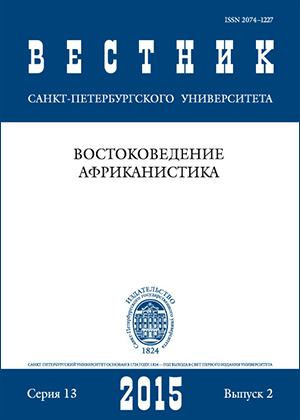Touhu: contents, attributes, main historical periods (regarding the study of the contents of “Li ji” confucian treatise)
Abstract
The article examines the contents of “Touhu” chapter of “Li ji” Confucian treatise — a chapter that tells about an ancient rite of throwing arrows into a jar — and provides a description of this old competition using the text. The main participants were the owner of the house (host), the guest and the master of ceremonies. The host and the guest competed in throwing arrows at a narrow-necked jar. The text mentions the attributes that were used: arrows, a jar and a vessel for counting tags. Important changes regarding the rules of touhu and its attributes took place at the turn of Han — the beginning of the early Medieval: the form of the jar and arrows changed and new rules emerged. Touhu became a popular, fascinating way of spending time that spread among different social groups. An important stage in the history of touhu was marked by a “Touhu xinge” treatise written by a Song scholar Sima Guang in which he noted the changes that had taken place in the rite with time and tried to renew the Confucian implication of the original “Touhu” chapter of “Li ji” for his own age. During Ming and Qing ages the appeal of the competition of touhu gradually faded and it remained popular only among the aristocracy. In today’s China this game has almost completely vanished, however, some of its forms still do exist in Korea and Japan. Refs 12.
Keywords:
China, Confucianism, “Li ji”, rite of li, throwing arrows into a jar, touhu, Han, Song, Sima Guang, “Touhu xinge”
Downloads
References
Downloads
Published
How to Cite
Issue
Section
License
Articles of "Vestnik of Saint Petersburg University. Asian and African Studies" are open access distributed under the terms of the License Agreement with Saint Petersburg State University, which permits to the authors unrestricted distribution and self-archiving free of charge.





